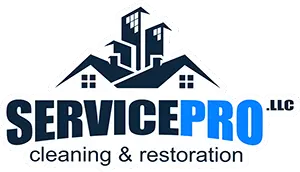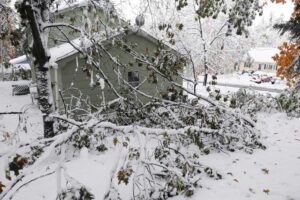When storms hit, the damage repair can feel overwhelming, but you don’t have to break the bank to make repairs. There are practical solutions that can help you restore your home without draining your wallet. From DIY techniques to budget-friendly materials, you’ve got options. Let’s explore how you can tackle everything from minor leaks to siding repairs efficiently and affordably, ensuring your home stands strong against future storms.
Key Takeaways
- Use roofing tape or tar for quick, budget-friendly patching of leaks and temporary repairs after a storm.
- Explore DIY techniques for minor repairs on siding, and consider using recycled materials for unique roofing touches.
- Evaluate mid-range vinyl windows for affordability and durability, potentially opting for DIY installation to save costs.
- Clean debris from gutters to prevent water buildup, and check for mold to avoid further damage after a storm.
- Investigate local contractors for affordable repair services and community programs that offer assistance with home repairs.
Assessing the Extent of Storm Damage
How do you know if your home has suffered significant storm damage? Start by conducting a thorough damage evaluation. Look for visible signs, like missing shingles, cracked windows, or water stains on walls and ceilings. These issues can signal a serious storm impact.
Next, check your yard. Fallen trees or debris may have caused hidden damage to your home’s exterior or foundation.
Don’t forget to inspect your gutters; clogs from storm debris can lead to water buildup, causing further issues.
If you’re unsure, consider calling a professional. They can provide an extensive assessment, ensuring you don’t miss any hidden damage.
Remember, acting quickly is essential to prevent further deterioration. By taking these steps, you’ll protect your home and foster a sense of belonging, knowing your space is safe and secure.
Your home deserves the care it needs to thrive after a storm.
DIY Repair Techniques for Minor Damage
When you’ve got minor storm damage, it’s crucial to assess the situation before jumping into repairs.
You’ll need a few key tools and a clear step-by-step process to make the job easier and more effective.
Let’s explore how you can tackle those small repairs yourself and save some money in the process.
Assessing the Damage
After a storm, evaluating the damage to your home can feel overwhelming, but it’s essential to tackle it step by step.
Begin your storm assessment by inspecting your roof for missing shingles or leaks. Check windows and doors for cracks or gaps. Look for water stains on walls and ceilings, which can indicate hidden leaks.
Make notes of any damage during your evaluation; this will help you prioritize repairs. If you spot minor issues like small holes or loose siding, you can often handle these yourself with basic tools and materials.
Document everything, as this information will be valuable if you decide to file an insurance claim. By breaking it down, you’ll feel more empowered and connected to your home again.
Essential Repair Tools
Once you’ve assessed the damage, it’s time to gather the right tools for those minor repairs you can tackle yourself. A well-equipped repair toolkit is essential for efficient fixes.
Start with basic supplies like a hammer, screwdriver, and utility knife. Don’t forget a sturdy ladder if you’re dealing with roof issues or high areas.
For patching and sealing, grab caulk, wood filler, and weatherproof tape. Safety gear—gloves and goggles—should always be in reach to keep you protected.
Having these essential supplies on hand saves you time and builds your confidence to tackle repairs.
Step-by-Step Process
Tackling minor storm damage can be a straightforward process if you follow a step-by-step approach.
First, assess the damage and take photos for your insurance claims; documenting everything is essential. Next, gather your necessary repair tools and safety gear.
If you’ve got leaks, patch them with roofing tape or tar. For broken windows, use plywood as a temporary fix until you can replace the glass.
Don’t forget to check for mold and clean up debris to prevent further issues.
Finally, consider preventive measures for future storms to enhance your storm preparedness.
Affordable Materials for Roof Repair
When it comes to roof repair, choosing affordable materials can greatly impact both your budget and the longevity of your home.
You’ll want to evaluate options like asphalt shingles, which are cost-effective and come in a variety of styles and colors to suit your taste. Durable shingles can withstand harsh weather, ensuring your home remains protected without breaking the bank.
Additionally, look into metal roofing as an affordable roofing solution. It’s lightweight, energy-efficient, and can last for decades with minimal maintenance.
If you’re feeling handy, you could even explore DIY options using recycled materials for a unique touch.
Cost-Effective Solutions for Window Replacement
Replacing windows can seem challenging, but there are several cost-effective solutions that can make the process smoother and more affordable. One great option is to use window film. This innovative material can enhance your existing windows by improving energy efficiency without the need for a full replacement.
By adding window film, you can reduce heat gain in summer and heat loss in winter, leading to lower energy bills.
If you do need to replace windows, consider purchasing mid-range vinyl options. They’re durable, affordable, and often come with energy-efficient features.
Also, don’t forget to check for local rebates or incentives for energy-efficient upgrades; it’s a smart way to save even more.
Lastly, DIY installation can greatly cut costs if you’re handy. With the right tools and guidance, you can tackle this project yourself, making your home more comfortable without breaking the bank.
Budget-Friendly Options for Siding Repair
If you’re facing siding damage, don’t fret; there are budget-friendly options to restore your home’s exterior without draining your wallet.
Start by evaluating the type of siding materials you have. Vinyl siding, for instance, is often easier and cheaper to repair than wood or fiber cement.
You can explore DIY repair techniques like patching small holes or replacing damaged panels, which save on labor costs. Just make sure to match the siding materials for a seamless look.
If the damage is extensive, consider a local contractor who specializes in affordable repairs—they often offer discounts for bulk work.
Additionally, look into community programs that may provide assistance for home repairs; you’re not alone in this!
With a little research and effort, you can enhance your home’s curb appeal while keeping your budget intact.
Finding Local Assistance for Emergency Water Extraction
How quickly can you find local assistance for emergency water extraction? When disaster strikes, you need swift action. Start by reaching out to local emergency responders who specialize in water removal. They can provide immediate relief, ensuring that your property is safe and secure.
Consider these steps to find the right help:
Research local services: Check online reviews and community recommendations to find reputable water extraction companies.
Contact your insurance provider: They can guide you to approved emergency responders and may cover some costs.
Ask for referrals: Friends or neighbors who’ve faced similar issues can recommend reliable professionals.
Preventative Measures to Minimize Future Damage
To protect your home from future storm damage, it’s crucial to take proactive steps.
Regular roof inspections can catch issues before they escalate, while stronger window installations provide added defense against high winds.
Additionally, maintaining your landscape can help direct water away from your home and reduce the risk of flooding.
Regular Roof Inspections
While storm damage can often seem unpredictable, regular roof inspections serve as a proactive measure to catch potential issues before they escalate.
By committing to consistent roof maintenance, you can greatly reduce the chance of costly repairs down the line. It’s recommended to schedule inspections at least twice a year, or more frequently if your area experiences severe weather.
Here are some key benefits of regular inspections:
- Early Detection: Identify minor problems before they turn into major repairs.
- Enhanced Longevity: Extend the lifespan of your roof with timely maintenance.
- Insurance Benefits: Keep records that can support claims after storm damage.
Taking these steps ensures your home remains safe and secure, fostering a sense of community and belonging among homeowners.
Stronger Window Installations
Investing in stronger window installations can considerably reduce the risk of future storm damage. By opting for window reinforcement techniques, you’ll enhance your home’s resilience against harsh weather.
Consider installing impact-resistant glass, which protects against flying debris and adds an extra layer of security. These windows can withstand high winds, keeping your home safe and your family secure.
Plus, they often come with energy-efficient features, helping you save on utility bills. Choosing these durable options fosters a sense of community among homeowners who prioritize safety and longevity.
Landscape Maintenance Strategies
After fortifying your windows, it’s time to turn your attention to the landscape surrounding your home. Proper landscape maintenance is essential for minimizing future storm damage and ensuring your outdoor space remains inviting.
Here are some effective strategies you can implement:
Regular garden cleanup: Remove debris, dead plants, and fallen branches that could become projectiles in strong winds.
Reinforce soil stability: Use mulch and native plants to prevent erosion, which can lead to costly landscape restoration.
Prune trees strategically: Trim overgrown branches to reduce the risk of them snapping during storms.
Conclusion
Tackling storm damage doesn’t have to break the bank. Like patching a worn-out tire, you can find effective and affordable solutions that keep your home safe and sound. By utilizing DIY techniques, sourcing budget-friendly materials, and seeking local assistance, you’ll restore your property and strengthen it against future storms. Stay proactive, and you’ll weather any storm with confidence and ease. Remember, preparation today can save you headaches tomorrow.




